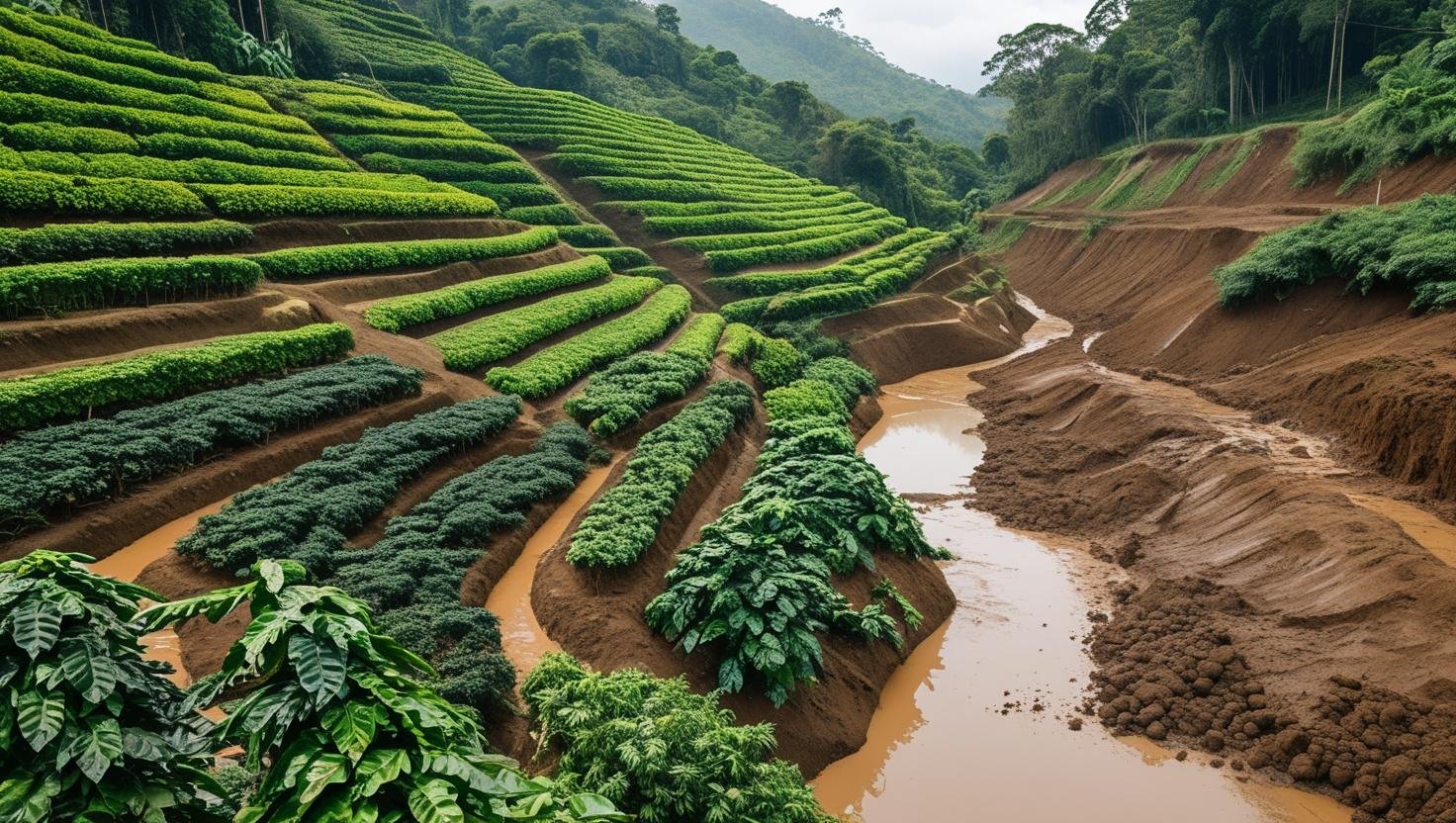Contents
- 1 Introduction
- 1.1 What Is Coffee Farming?
- 1.2 Deforestation: A Major Environmental Concern
- 1.3 Soil Degradation and Erosion
- 1.4 Water Usage and Pollution
- 1.5 Climate Change Feedback Loop
- 1.6 Loss of Biodiversity
- 1.7 Human and Social Impact (Environmental Justice)
- 1.8 The Role of Sustainable Coffee Farming
- 1.9 What Can Consumers Do?
- 1.10 Conclusion: A Greener Path Forward
- 1.11 Frequently Asked Questions (FAQs)
- 1.11.1 Q1. What is the biggest environmental issue caused by coffee farming?
- 1.11.2 Q2. How does coffee farming affect water systems?
- 1.11.3 Q3. What is shade-grown coffee?
- 1.11.4 Q4. Can consumers help reduce the environmental impact of coffee farming?
- 1.11.5 Q5. Are there any certifications that promote sustainable coffee?
Introduction
Coffee is one of the most consumed beverages in the world, with millions of cups brewed daily. However, behind the rich aroma and taste of coffee lies a deeper issue — the impact of coffee farming on the environment. As global demand for coffee rises, so does the pressure on ecosystems, biodiversity, and natural resources. This blog explores the impact of coffee farming on the environment, the causes, consequences, and the role of sustainable practices in mitigating damage.
What Is Coffee Farming?
Coffee farming refers to the cultivation of coffee plants, primarily Coffea arabica and Coffea canephora (robusta), which are harvested for their beans. These beans are processed, roasted, and brewed into the coffee we know and love. Most coffee is grown in tropical regions — known as the “Coffee Belt” — stretching across Latin America, Africa, and Asia.
Deforestation: A Major Environmental Concern
One of the most significant impacts of coffee farming on the environment is deforestation. Traditional coffee farming involved growing coffee under shade trees, preserving much of the natural forest. However, modern coffee farming practices — particularly in the pursuit of higher yields — often use sun cultivation methods, where forests are cleared to plant coffee in open fields.
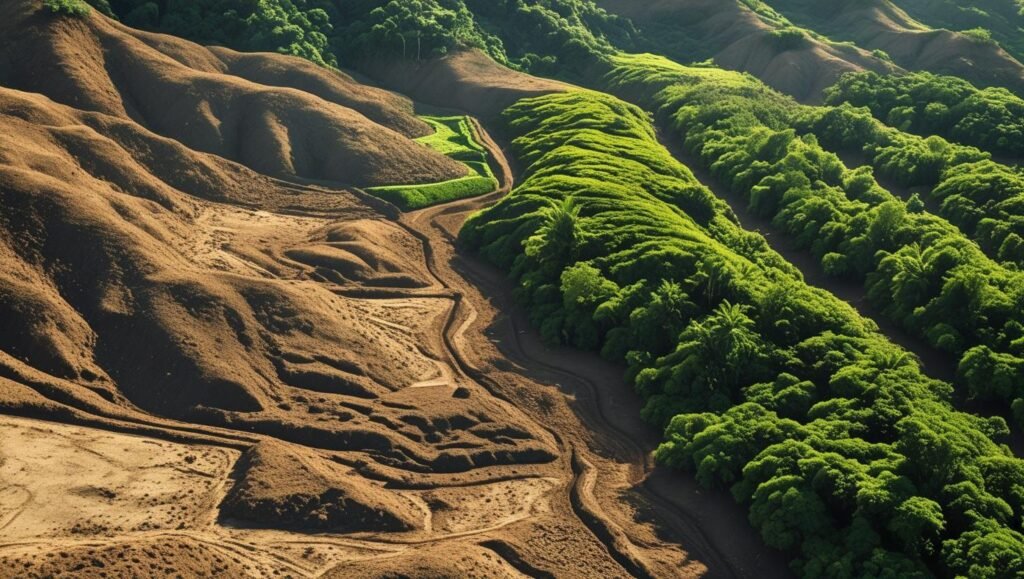
How Deforestation Affects the Ecosystem:
- Loss of biodiversity: Forests are home to countless plant and animal species. Clearing them for coffee cultivation threatens their survival.
- Soil erosion: Without tree cover, soil is exposed to wind and rain, leading to degradation.
- Climate change: Forests act as carbon sinks. Their removal increases carbon dioxide levels in the atmosphere, contributing to global warming.
Thus, the impact of coffee farming on the environment begins with the destruction of ecosystems through deforestation.
Soil Degradation and Erosion
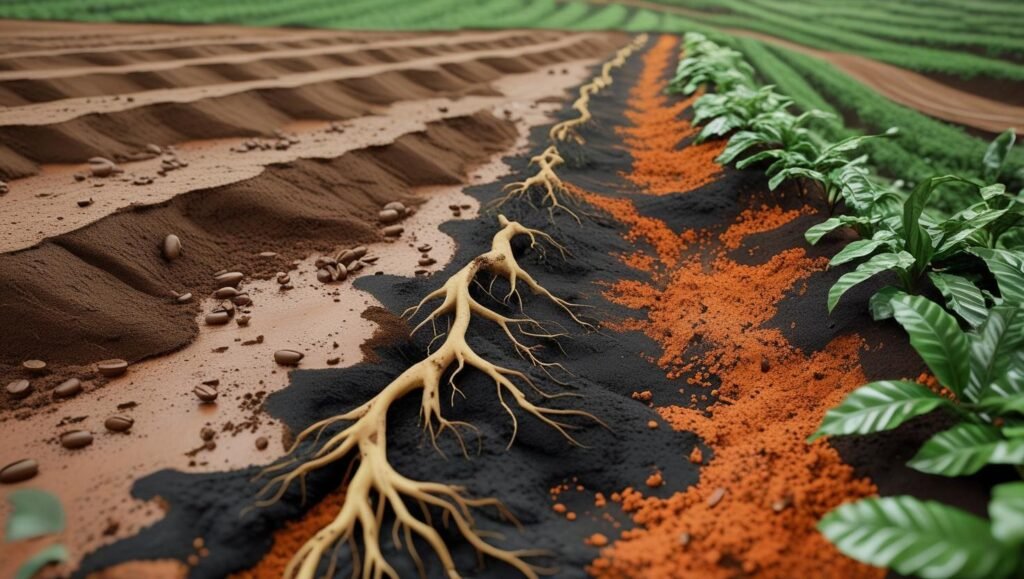
https://www.carbonclick.com/news-views/the-environmental-impact-of-coffee-growing-and-transportationThe impact of coffee farming on the environment extends to soil health. Intensive coffee farming exhausts the soil by depleting it of nutrients and disturbing its natural balance.
Key Environmental Issues Related to Soil:
- Monoculture planting in coffee farming reduces soil fertility over time.
- Chemical fertilizers used to replenish nutrients can disrupt the microbial ecosystem.
- Erosion becomes a serious issue on hilly terrains, common in coffee-growing areas.
Without sustainable soil management, the impact of coffee farming on the environment includes long-term land degradation and reduced agricultural productivity.
Water Usage and Pollution
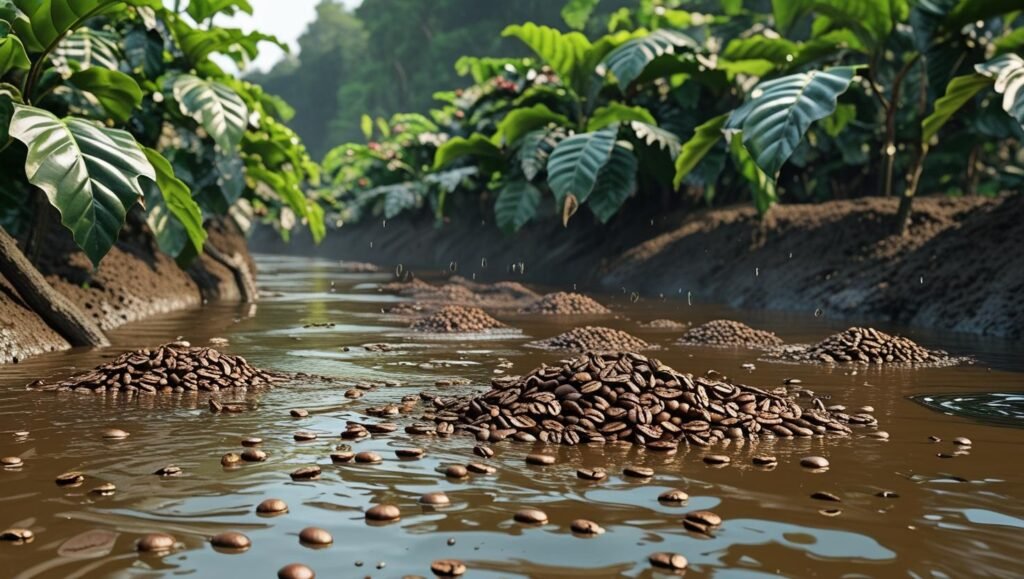
Water plays a vital role in coffee production, especially during the processing stage. Washing the beans requires significant amounts of clean water, contributing to the impact of coffee farming on the environment in terms of water scarcity and contamination.
Water-Related Environmental Issues:
- Excessive water consumption can drain local water sources.
- Wastewater from coffee processing often contains organic matter and chemicals, which can pollute rivers and streams.
- Pesticide and fertilizer runoff contaminates local water bodies, affecting aquatic life and human health.
If not managed responsibly, the water-related impact of coffee farming on the environment can be severe and far-reaching.
Climate Change Feedback Loop
Coffee farming is both a victim and contributor to climate change. On one hand, climate change affects coffee yield and quality. On the other, unsustainable farming practices contribute to greenhouse gas emissions.
How Coffee Farming Fuels Climate Change:
- Use of synthetic fertilizers releases nitrous oxide, a potent greenhouse gas.
- Clearing forests for plantations releases stored carbon.
- Energy-intensive processing methods increase carbon footprints.
Therefore, the impact of coffee farming on the environment includes accelerating the very climate changes that threaten coffee crops themselves.
Loss of Biodiversity
The conversion of forests into coffee plantations leads to the loss of biodiversity, one of the most alarming environmental consequences. This is especially true in regions like Ethiopia, Colombia, and Brazil — biodiversity hotspots that are also major coffee producers.
How Biodiversity Is Affected:
- Habitat destruction for birds, insects, and animals.
- Pesticide use kills beneficial species like bees and butterflies.
- Monoculture plantations limit ecosystem resilience.
The impact of coffee farming on the environment is compounded when biodiversity loss disrupts pollination and natural pest control systems.
Human and Social Impact (Environmental Justice)
The impact of coffee farming on the environment also intersects with social justice. Environmental degradation from coffee farming often affects smallholder farmers and indigenous communities the most.
Socio-Environmental Challenges:
- Limited access to resources to implement eco-friendly practices.
- Exposure to harmful chemicals affecting farmer health.
- Displacement due to land conversion and degradation.
Environmental and human sustainability must go hand-in-hand to minimize the impact of coffee farming on the environment.
The Role of Sustainable Coffee Farming
Fortunately, there are solutions. Sustainable coffee farming practices are designed to reduce the impact of coffee farming on the environment while ensuring long-term productivity.
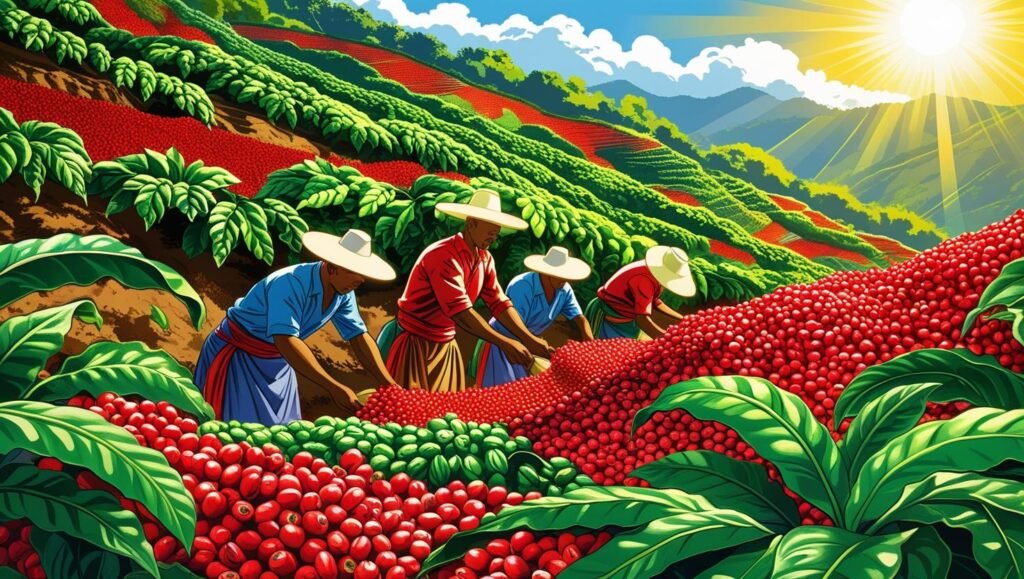
Key Sustainable Practices:
- Shade-grown coffee: Preserves tree cover and supports biodiversity.
- Organic farming: Reduces reliance on synthetic chemicals.
- Agroforestry: Integrates trees and crops for ecological balance.
- Water-efficient processing: Uses less water and treats waste responsibly.
- Fair Trade & Rainforest Alliance certifications: Promote ethical and environmental standards.
By embracing sustainability, the coffee industry can significantly reduce the impact of coffee farming on the environment and protect both people and the planet.
What Can Consumers Do?
As a coffee drinker, your choices have power. Supporting sustainable brands and practices can help reverse the impact of coffee farming on the environment.
Tips for Eco-Conscious Coffee Consumption:
- Buy certified coffee (Organic, Fair Trade, Rainforest Alliance).
- Choose shade-grown coffee to support forest preservation.
- Reduce waste by using reusable cups and filters.
- Support local roasters that prioritize ethical sourcing.
- Educate others about the environmental impact of coffee farming.
Small actions by many consumers can lead to big changes in reducing the impact of coffee farming on the environment.
Conclusion: A Greener Path Forward
In conclusion, the impact of coffee farming on the environment is undeniable — from deforestation and soil erosion to water pollution and biodiversity loss. However, by shifting toward sustainable coffee farming practices and making informed consumer choices, we can protect the planet without giving up our beloved brew.
Let’s support a coffee industry that not only energizes us but also respects nature. The journey toward environmentally responsible coffee starts with awareness and action. By addressing the impact of coffee farming on the environment, we can enjoy coffee with a clearer conscience — one cup at a time.
Frequently Asked Questions (FAQs)
Q1. What is the biggest environmental issue caused by coffee farming?
Deforestation is one of the most significant environmental impacts of coffee farming. Sun-grown coffee requires clearing forests, which leads to habitat loss, carbon emissions, and biodiversity decline.
Q2. How does coffee farming affect water systems?
Coffee farming affects water through both overuse and pollution. The wet processing of coffee cherries consumes a lot of water and produces contaminated wastewater, which can harm aquatic ecosystems if untreated.
Q3. What is shade-grown coffee?
Shade-grown coffee is cultivated under a canopy of trees. It mimics natural forest conditions, helping preserve biodiversity and reduce soil erosion. It is a key practice in sustainable coffee farming.
Q4. Can consumers help reduce the environmental impact of coffee farming?
Yes. By choosing certified sustainable coffee, reducing waste, and educating others, consumers can support ethical practices and lessen the environmental impact of coffee.
Q5. Are there any certifications that promote sustainable coffee?
Yes. Look for certifications like Rainforest Alliance, Fair Trade, Organic, and Bird-Friendly Coffee. These labels indicate that the coffee was produced using environmentally and socially responsible practices.

